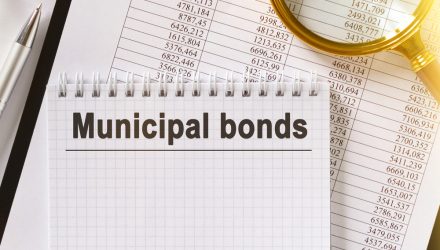Municipal bonds haven’t been shielded from the downturn in the debt market, but Wall Street strategists are painting a rosier picture for the rest of 2022, according to an Advisor Perspectives article.
The Bloomberg Municipal Bond index fell as much as 10% in the first half of 2022, revealing the pain in not just munis, but in the overall bond market this year. However, a bottom could finally be here, allowing for value-oriented bond investors to snatch municipal bonds.
“Things can only get better for the $4 trillion muni market in the second half of the year, according to Wall Street strategists,” the Advisor Perspectives article said.
“With the rise in bond yields mostly priced in, the market is on track to pare its 9.25% year-to-date loss, they say,” the article added. “State and local government finances are also looking healthy, which adds to the rosy sentiment.”
Getting Municipal Bond Exposure
One specific place to get tax-free municipal bond exposure is via an exchange traded fund (ETF) such as the Vanguard Tax-Exempt Bond ETF (VTEB). With a 0.06% expense ratio, the fund offers low-cost exposure to municipal debt.
VTEB tracks the Standard & Poor’s National AMT-Free Municipal Bond Index, which measures the performance of the investment-grade segment of the U.S. municipal bond market. This index includes municipal bonds from issuers that are primarily state or local governments or agencies whose interests are exempt from U.S. federal income taxes and the federal alternative minimum tax (AMT).
Municipal bonds offer investors an ideal safe haven, given the relative stability of munis. That should ease the fears of some investors looking for a place to park their capital amid a looming recession.
“We’re not going to be able climb our way out of this hole, but we’re setting ourselves up for a pretty good Q4 and 2023,” said Mikhail Foux, head of municipal strategy at Barclays. “The focus is clearly shifting away from inflation to possible recession or at least slower growth. That should put some kind of cap on how high rates will go.”
For more news, information, and strategy, visit the Fixed Income Channel.

